What’s Up With That?

My friend Paul recently shared a series of articles about his camping and backpacking trip to Big Bend National Park. In Part 2, he recommended a Driving Guide for visitors to the park. (by the way, I recommend you read Part 1 and Part 3 of Paul and Joan’s recent adventures in Texas).
He said, “If you decide to drive the backroads of Big Bend, we found the $7 backcountry road guide a great purchase. You can get it online or at the visitor centers. It has mile-by-mile descriptions (sorry to those in the civilized world, it only lists Freedom Units TM), a brief description of the routes, and even some history.” <bold is mine>
I was curious about the term “Freedom Units.” I’m not really into slang words or phrases, and I don’t know much about current urban dictionaries. So, I did a quick search online, and I found out that Freedom Units is a joke about the Americanized Imperial measurement system that the United States uses.
Guess what? Only three countries in the whole world officially use the Imperial System: the United States, Liberia, and Myanmar (also known as Burma). The rest of the world uses the metric system. I don’t mean to knock Liberia or Myanmar, but they don’t come to mind as places that are at the forefront of scientific research. The United States is.
Also, I found out that every country in the world, except these three, has laws that require people to use the metric system.
So, what’s the deal? Is the metric system some kind of communist plot? Is there a good reason why the United States should keep using the Imperial System? Let’s take a closer look at this topic.
This website may be compensated for linking to other sites for sales of products. As an Amazon Associate I earn a small fee from qualifying purchases at no additional cost to the purchaser.
My Experiences
I have lots of experience with both systems.
For Work
Back in the early ‘70s, I decided to become an automotive mechanic. At that time, most cars in the U.S. were made here and used standard fasteners, but the German and Japanese imports used metric ones. So, I had to buy two sets of tools: one SAE set and one Metric set. The SAE set uses inches and fractions of inches, while the Metric set uses centimeters and millimeters.
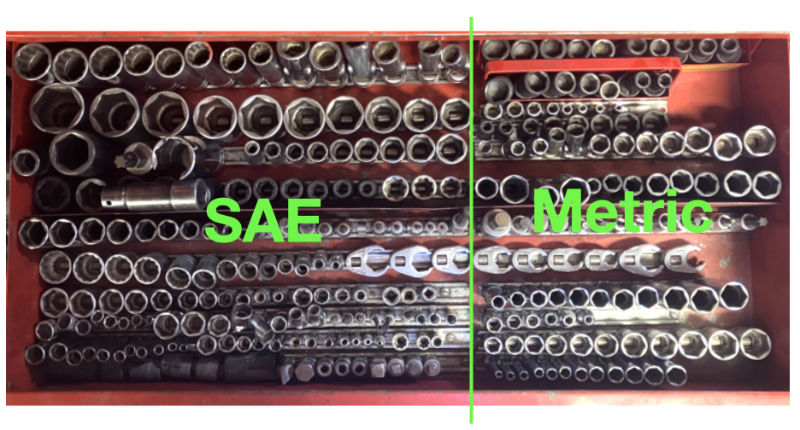

In addition to sockets and wrenches for nuts and bolts, the everyday job often needed precise measurements using calipers, dial indicators, and other gauges. Some specifications were in Imperial units, while others were in Metric. Some measuring tools had both scales, but other tools at the time required buying a SAE and a Metric version.
Today, the automotive industry in the US has mostly switched to the Metric System.
Everyday Life
For me, miles are the most common measurement. I bet this is true for most people here in the US. How far I have to drive, walk, or hike. How many miles per gallon my car gets. It’s all so familiar and easy.
I can instantly picture a mile, half a mile, or even a quarter mile. I don’t have to think about it or do any math. It’s just second nature. And that’s true for many other measurements I’ve used all my life, like gallons or pounds. But it’s not always so simple.
When a Gallon isn’t a Gallon
In 1979 I rode my motorcycle from California to New York. Then I headed into Canada. Canada because a measurement nightmare.
On this trip I meticulously recorded mileage, gasoline purchases and miles per gallon. I still have that small notebook used to capture all this data.
First problem was money. Canada uses dollars. Canadian dollars, which are a different value than American dollars. Wanting to keep an “apples to apples” record of expenses, I had to use a conversion factor. This wasn’t difficult. But volumes were.
When I first drove into Canada, gas stations sold gasoline by the gallon. Only it was Imperial gallons, not American gallons. An American gallon is equal to four US quarts (32 fluid ounces). An Imperial gallon is 4.8 US quarts. A Canadian quart is 38.43 fluid ounces. Confusing, isn’t it.
Then things got even more problematic. As I got further into Canada, gas stations sold gasoline by the liter. OMG! What a mess! But I continued to record my purchases, which required a lot of match to keep everything matched to US volumes and US currency. The trip sure presented a business case for standardized units of measurement.
When an Ounce isn’t an Ounce
Another mind bender for Imperial luddites. Take a look at these two items —
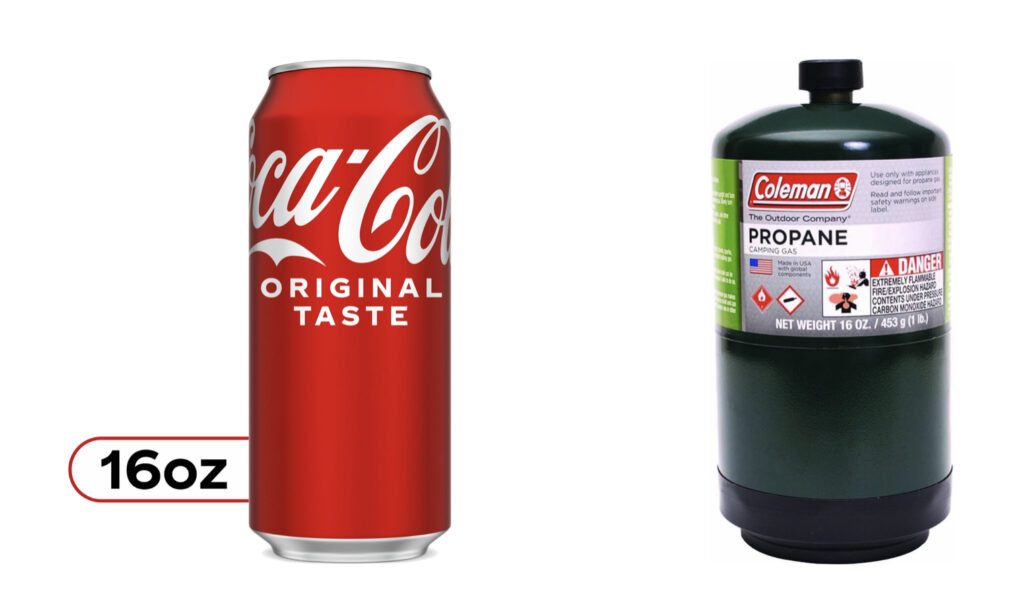
So, I have a 16oz can of Coca-Cola and a 16oz Coleman propane canister. Now, here’s the thing – both of these things have the same name, but they’re actually different measurements. The Coca-Cola can has 16 fluid ounces of the drink, while the Coleman canister has a net weight of 16 ounces of propane. This might be a bit confusing for those who aren’t familiar with the Freedom Unit system. To make things easier, let’s convert both of these into metric-speak.
16 ounces of Coca-Cola = 0.473176 liters of soda
16 ounces net weight of propane = 453.592 grams of propane
What different sizes of soda does Coca-Cola sell and why?
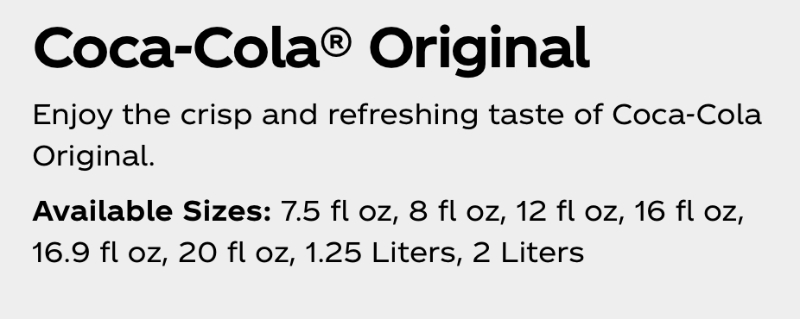
There are some odd sizes such as 16.9 fl oz. Why? Let’s do some math.
16.9 fl oz = 0.4997926 liters, which we can just round off to 0.5 liters.
Some Americans just can’t wrap their heads around a 0.5-liter beverage. They can grasp 16.9 fluid ounces, which is about a pint. If the US switched to the metric system, companies like Coca-Cola would likely standardize all sizes.
But Americans don’t like government rules. We prefer our freedom to choose. We’ve got enough regulations already. I value freedom of choice, but I also think we should have more voluntary standardization.base-10) system is just easier to use, once you get used to it.
I mean, what’s not to like about:
1 kilometer = 1,000 meters; 1 meter = 10 centimeters; 1 centimeter = 10 millimeters
versus
1 mile =1760 yards; 1 yard = 3 feet; 1 foot = 12 inches
However, I can’t think in metric!!
What Language to Polyglots Think In?
A polyglot is someone who speaks multiple languages. I know a few. When I ask them what language they think in, they all say, “It depends.” “Depending” means it depends on the situation. They think in the language that’s best for the moment. The important thing is they don’t switch languages; that is, they are not mentally translating languages while thinking.
When I’m thinking about units of measurement (temperature, weight, distance, volume, etc.), I think or imagine the Americanized Imperial value. If the temperature is 75° F, I know what to wear. If the temperature is 24° C, I have to convert it to Fahrenheit to know what to wear. Converting Celsius to Fahrenheit is not an easy mental exercise:
°F = (°C X 1.8) + 32
I’m not going to memorize the formula.
Distance is a little easier. If someone tells me the distance left to travel is 50 kilometers, I can quickly estimate it in miles, since a kilometer is around .62 miles. So a quick estimate is 30 miles (50 X .6). I cannot visualize 50 kilometers, whereas I can mentally grasp 30 miles, whether I am backpacking or driving.
The USGS Topographical Map Debacle
The United States Geological Survey has been making topographical maps since 1882. These maps are super helpful for backpacking and other outdoor adventures. One cool thing they include are “contour lines.” These lines show how steep an area is. They’re especially important for hiking off the beaten path. Sometimes, the accuracy can be a matter of life and death when tackling a route.
Until 2006, the USGS used a standard 40-foot interval for contour lines on the maps I use. I didn’t know they changed until 2008, and I almost got into trouble because of a change to the Metric System. I bought two USGS topographical maps for the trip at a National Park Service store. The maps covered an area that are adjacent to each other. One map, as expected had 40 foot contour lines. But the second map, and something I would never think to check, the contours were not 40 feet, they were 20 meters, which is 65 feet!
On this particular trip, I had planned to descend into a small valley. I knew it would be a bit tricky, but I couldn’t find a safe way down. It just seemed too steep compared to what the map showed. I was stuck on a ridge, and then I noticed that the intervals weren’t 40 feet, but actually 65 feet. I couldn’t descend safely. I had to take an eight-hour detour to get to my planned route.
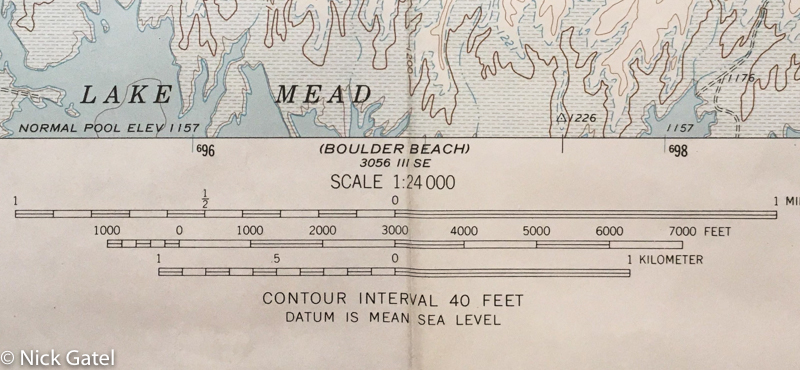
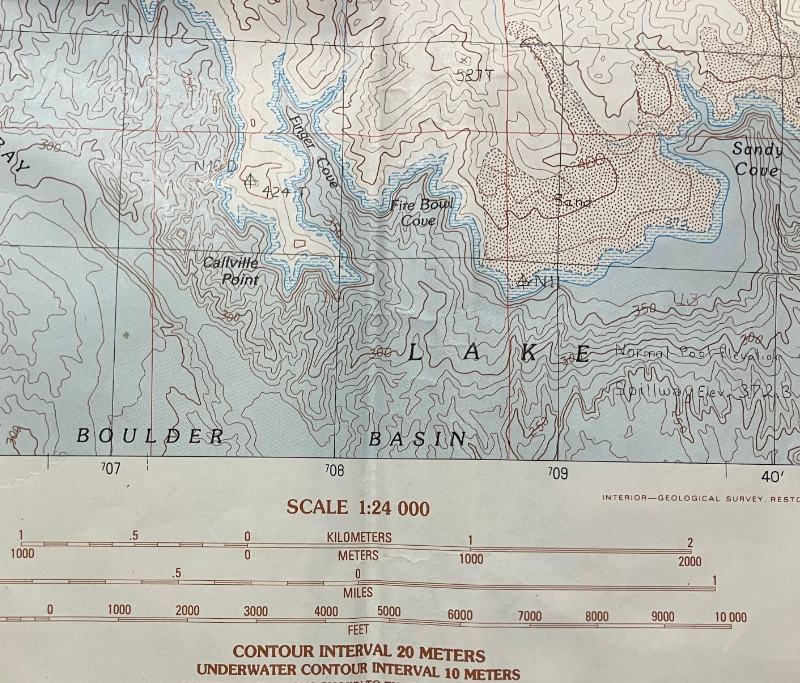
What If?
Imagine if we suddenly switched to the Metric System by law.
It would be a massive undertaking. Just changing road signs would cost us over $1.2 billion in taxpayer money. Back in 1995, the General Account Office of the Federal Government estimated the cost to convert all road signs would be $420 million, which is equivalent to $1.2 billion today. And let’s not forget that there are probably more signs now. So, $2 billion might be a more realistic estimate.
But here’s the catch: there would be unintended consequences, a kind of mind game that would play out.
The Indianapolis 804
The Indianapolis 500 race is 500 miles, right? What if we changed it to 804 kilometers? Or maybe we could round it down to 800 km? That would totally change a 114-year tradition!
First and 9
In football, a first down happens when the ball moves 10 yards forward from the original line of scrimmage. That’s about 9.144 meters.
What if we made the football field smaller? We could shrink it from 100 yards to 91.44 meters. Then, First and 9 would mean a 9.144-meter gain. Or, we could make the field 100 meters long (109.361 meters) and First and 10 would be 10 meters (10.9361 yards). I can’t imagine the NFL, colleges or high schools changing anything — could the government sue them for not converting to our new Metric Law? Heck, the European Union not dictates to Apple what kind of a cable they must use for their iPhones.
LeBron James and Stephen Curry
A basketball hoop is 10 feet high from the ground to the top of the rim. Let’s convert it to 3.048 meters. That doesn’t sound very appealing. We could change it to 3 meters, which is 9.84252 feet. But it might be better to raise the hoop since the average height of an NBA player has increased by almost 3 inches since 1950.
Maybe we could raise it to 3.5 meters (11.4829 feet). LeBron could still dunk the ball. But Stephen Curry, who holds the all-time record for 3-pointers made (3,913 made), would probably have trouble adjusting at that distance from the basket. Oh, and not to mention, there’s this strange arc measurement of the NBA three-point line, which is 23 feet 9 inches, but 22 feet at the corners.
The NBA would probably be as unexcited about changing as the NFL would be.
The Sub 4-Minute Mile
Most people today weren’t around when it was thought that running a mile in under 4 minutes was impossible for a human? Well, Roger Bannister proved that wrong in 1954! As of 2022, only 1,755 athletes have managed to break that barrier. The current world record is held by Hicham El Guerrouj of Morocco, who clocked in at an impressive 3:43.13 back in 1999. Even though running a sub 4-minute mile is still considered an elite feat, it’s worth noting that only 7,269 people have conquered Mount Everest, which is 2.5 times more people who have achieved this remarkable feat of a sub 4-minute mile.
Interestingly, the mile is no longer an official event in major track and field competitions like the Olympics and the World Games. However, it’s the only imperial distance that World Athletics, the international governing body for track and field since 1912, recognizes.
Despite the 1500-meter race being the top international middle-distance event, the mile is still widely run in various venues, including high school, college, and professional meets.
This example perfectly illustrates the coexistence of the metric and imperial systems in the world of sports.
Does Converting to the Metric System Make Sense?
Yes. An astounding yes!
I often use millimeters and grams when measuring smaller quantities. I can deal with metric conversions, even though I can’t “think metric.”
Adding fractions of imperial units is crazy . . .
3 lb 7 oz + 2 lb 14 oz = 6.313 lb, or 6 lb 5 oz (some mental acrobatics are required here).
Grams are easier!!
1559 grams + 1105 grams = 2,664 grams, or 2.664 kilograms
Mental conversions are usually not that difficult for many measurements, such as
1 liter =1.0567 quarts
I really cannot make a good case for sticking with Freedom Units.
![1. [ DURABLE & LEIGHTWEIGHT ]- GRASSMAN Tent Stakes made of high-strength 7075 aluminum alloy material without unnecessary weight to your pack. Metal tent stakes can stably fix the tent on the ground, won't bend or fail on you. 2. [ PACKAGE CONTENT ]...](https://m.media-amazon.com/images/I/51T81q-UYaL._SL160_.jpg)
